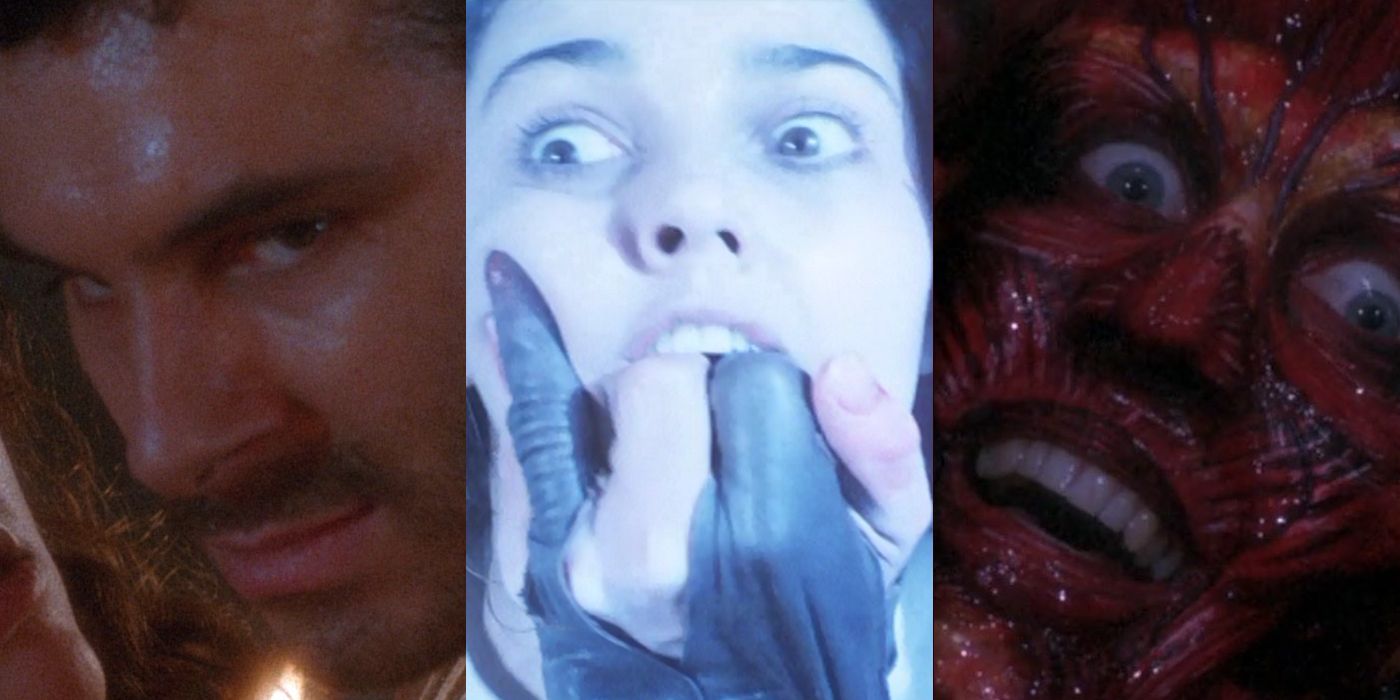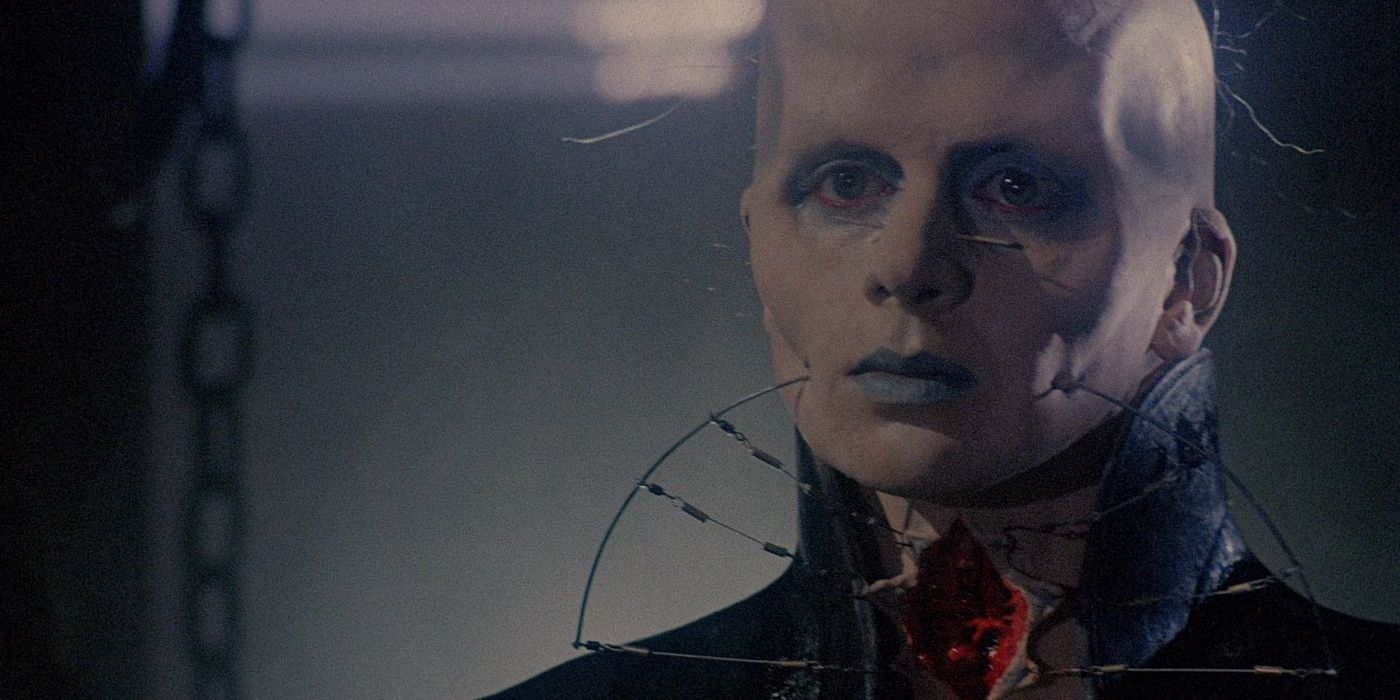Hellraiser has become a queer horror classic, although not in an obvious way. When most people think of Clive Barker's blood-splattered movie debut, they think of Pinhead, the cenobites, and perhaps Julia's evil-queen face as she kills innocent men with her hammer. On the surface, Hellraiser is graphic and truly horrific, yet beneath it is a sexual subtext that is more than just the status quo.
Hellraiser was released in 1987 during the '80s horror boom alongside many other popular horror franchises, such as Halloween and A Nightmare on Elm Street. However, Hellraiser was different from the slasher-flick nature of its contemporaries, offering a completely original vision. At its core, Hellraiser is a love story about sexual obsession, and the things it says about sexuality are pretty extreme.
The concept and script for Hellraiser came completely from the mind of Clive Barker, who wrote and directed the movie based upon his book, The Hellbound Heart. Barker is an openly gay man. He came out when he was 18, and now lives in Beverly Hills with his partner. He won a GLAAD Media Award in 2004, and it could be argued that his sexuality underpins all of his work, thereby making Hellraiser a part of gay culture. Nonetheless, Hellraiser has become a queer horror classic for much more than this simple fact.
Why Hellraiser Is Considered Queer Horror
Hellraiser is classified as Queer Horror on Shudder, and has been considered to be in this category for a long time for good reason. The movie begins with Frank Cotton, a hedonist looking for the ultimate sexual experience. By exchanging "small favors", perhaps of a sexual nature, he is able to get his hands on the Lament Configuration, a puzzle box he believes contains a supreme sensual experience. However, when he's greeted by the cenobites, who view pain as the ultimate pleasure, he realizes he's gone too far. Frank has a rather twisted sense of sexuality. Even before he's taken by the cenobites, he engages frequently in violent, sexual acts, including a sex scene that was filmed with Julia that the censors forced Barker to cut from the original filming. In other words, Hellraiser portrays sexuality as far more open and fluid than the usual, conservative horror movie trope in which promiscuous - and often straight - teenagers are typically the first victims of the killer.
As for the cenobites themselves, their designs were directly inspired by S&M clubs, both visually and emotionally. In an interview with The Guardian, Barker talked about an underground club in New York called Cellblock 28 which had a hardcore S&M night. This club is where Barker saw people being pierced and cut on purpose and he witnessed the extremes people would go to for sex.
"I was validating a lifestyle," Barker said in his interview with The Guardian. "It was a celebration of the beauty of these strange secret rituals.” Indeed, the S&M vibe of the film has made it popular with the kink comic-con crowd, even over 30 years after its release, forever cementing Hellraiser's place as a queer horror classic.


